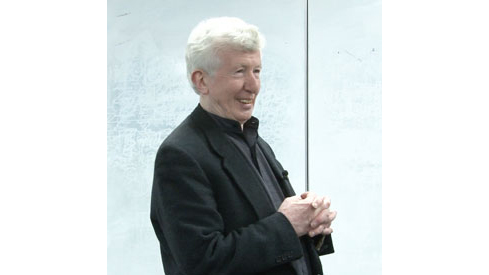Lecture on Theories of Life
Course Description
The processes that underlie cellular motility – the contraction of muscle and the beating of cilia and flagella – not only share a common mechanism, based on sliding filaments, but can also share oscillatory dynamics.
The present lecture uses nonlinear dynamics as a framework to approach complex behaviours in motile systems and presents mechano-chemical oscillatory systems as a prototype of nonlinear science. The key idea from nonlinear dynamics is that very simple nonlinear models can have complicated behaviours and that although biological systems do have intricate and complicated structures and behaviours, simple nonlinear models can quantitatively describe these behaviours and a mathematical analysis of such simple models can help in the understanding of biological processes.
-
- #1 Background and Introduction
-
- #2 Nerve excitation and oscillation
-
- #3 Mathematics of Excitability and Oscillation
-
- #4 Bifurcations
-
- #5 From simple to complex dynamical behaviours in mechano-chemical cycles
-
- #6 Stability and Bifurcations
-
- #6 Power Point file
-
- #7 Flagellar Motility
-
- #8 Dynamics of Flagella and Cilia: Part 1
-
- #8 Power Point file
-
- #9 Dynamics and Flagella and Cilia: Part 2
-
- #9 Power Point file
-
- #10 Molecular Mechanisms for Flagella and Cilia: Part 1
-
- #11 Molecular Mechanisms for Flagella and Cilia: Part 2
-
- #12 Mathematical Models for Cilia
Details
- Year/Term
- 2008
- Faculty/
Graduate School - General Education
- Language
- English
- Instructor name
- Masatoshi MURASE(Associate Professor, Yukawa Institute for Theoretical Physics)
Syllabus
| Schedule and Contents | #1 Background and Introduction #2 Nerve excitation and oscillation #3 Mathematics of Excitability and Oscillation #4 Bifurcations #5 From simple to complex dynamical behaviours in mechano-chemical cycles #6 Stability and Bifurcations #7 Flagellar Motility #8 Dynamics of Flagella and Cilia: Part 1 #9 Dynamics of Flagella and Cilia: Part 2 #10 Molecular Mechanisms for Flagella and Cilia: Part 1 #11 Molecular Mechanisms for Flagella and Cilia: Part 2 #12 Mathematical Models for Cilia |
||
|---|---|---|---|
Related Courses
 Public Lecture
Public Lecture
Hiroki Yamauchi
General Education, Field Science Education and Research Center
2021 Course
Course
Hiroaki Fujii
General Education, Field Science Education and Research Center
2021 Course
Course
John Robert CLAMMER
General Education
2019 Course
Course
Prof. Toshihiro Nakamura
General Education, Institute for Liberal Arts and Sciences
2018
